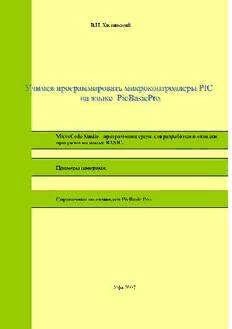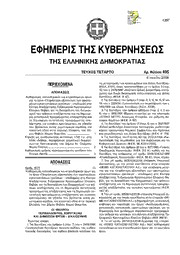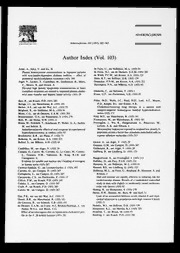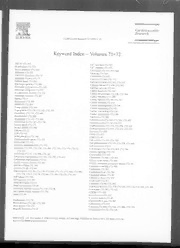
Restoring the Eastern Mediterranean as a US Strategic Anchor PDF
Preview Restoring the Eastern Mediterranean as a US Strategic Anchor
COVER PHOTO WIKIMEDIA COMMONS/LIBRARY OF ISTANBUL UNIVERSITY. NO:6605 MAY 2018 1616 Rhode Island Avenue NW Washington, DC 20036 202 887 0200 | www.csis.org Restoring the Eastern Lanham • Boulder • New York • London Mediterranean as a 4501 Forbes Boulevard Lanham, MD 20706 301 459 3366 | www.rowman.com U.S. Strategic Anchor AUTHORS Jon B. Alterman Heather A. Conley Haim Malka Donatienne Ruy ISBN 978-1-4422-8073-1 Ë|xHSLEOCy280731z zv* :+:!:+:! A Report of the CSIS EUROPE PROGRAM AND CSIS MIDDLE EAST PROGRAM Blank MAY 2018 Restoring the Eastern Mediterranean as a U.S. Strategic Anchor AUTHORS Jon B. Alterman Heather A. Conley Haim Malka Donatienne Ruy A REPORT OF THE CSIS EUROPE PROGRAM AND CSIS MIDDLE EAST PROGRAM Lanham • Boulder • New York • London 594-74704_ch00_3P.indd 1 5/18/18 9:47 AM About CSIS For over 50 years, the Center for Strategic and International Studies (CSIS) has worked to develop solutions to the world’s greatest policy challenges. T oday, CSIS scholars are providing strategic insights and bipartisan policy solutions to help decisionmakers chart a course toward a better world. CSIS is a nonprofit organ ization headquartered in Washington, D.C. The Center’s 220 full- time staff and large network of affiliated scholars conduct research and analy sis and develop policy initiatives that look into the future and anticipate change. Founded at the height of the Cold War by David M. Abshire and Admiral Arleigh Burke, CSIS was dedicated to finding ways to sustain American prominence and prosperity as a force for good in the world. Since 1962, CSIS has become one of the world’s preeminent international institutions focused on defense and security; regional stability; and transnational challenges ranging from energy and climate to global health and economic integration. Thomas J. Pritzker was named chairman of the CSIS Board of Trustees in November 2015. Former U.S. deputy secretary of defense John J. Hamre has served as the Center’s president and chief executive officer since 2000. CSIS does not take specific policy positions; accordingly, all views expressed herein should be understood to be solely those of the author(s). © 2018 by the Center for Strategic and International Studies. All rights reserved. ISBN: 978-1-4422-8073-1 (pb); 978-1-4422-8074-8 (eBook) Center for Strategic & International Studies Rowman & Littlefield 1616 Rhode Island Ave nue, NW 4501 Forbes Boulevard Washington, DC 20036 Lanham, MD 20706 202-887-0200 | www . csis .o rg 301-459-3366 | www .r owman . com 594-74704_ch00_3P.indd 2 5/18/18 9:47 AM Contents v Acknowl edgments vii Executive Summary 1 Introduction 3 CHAPTER 1 | Background and Current Challenges 5 Power Plays in the Region: Russ ia, Iran, Turkey, China 18 Regional Transformation: Fragmentation, Migration, Economic Crises, and Energy 29 CHAPTER 2 | U.S. Goals and Priorities in the Eastern Mediterranean 29 Strategic Goal 1: Resolving the Syrian Conflict 47 Strategic Goal 2: Managing Growing Policy Divergence with Turkey 60 Looking Forward 62 About the Authors III 594-74704_ch00_3P.indd 3 5/18/18 9:47 AM 594-74704_ch00_3P.indd 4 5/18/18 9:47 AM Acknowle dgments A plethora of reports have been produced on the Middle East, on Turkey, on Greece, and on the Syrian crisis. But few have brought together Middle Eastern and Eu rop ean analytical perspectives. In this comprehensive report, we aimed to develop a policy framework for the Eastern Mediterra- nean as a specific region, as a region that represents a geostrategic seam between Eu rope and the Middle East, and one that is vital to U.S. and Eu ro pean national security interests. It was ambitious and challenging work b ecause think tanks, like the U.S. government, tend to silo their expertise into regional definitions. What made this proj ect so rich and rewarding was that it brought together se nior officials, experts, and colleagues with Eu ro pean and Middle Eastern experience, as well as those who have deep knowledge of energy, migration, and economic dynamics in the Eastern Mediterranean. We turned to our historical knowledge of the region to reassess old and new po liti cal fault lines. Therefore, the authors would like to sincerely thank many colleagues who offered their valuable insights and perspectives, and challenged us to think about the Eastern Mediterranean in a new way. During our research, we brought together experts in three workshops; the first and third workshops were held in Washington, DC, in January and October 2017, and our second workshop was held in Athens, Greece, in July 2017. Our gathered experts contributed enormously to our final report. The report was in a constant pro cess of revi- sion as we grappled with major events unfolding in the region, which occurred on a near- daily basis. We were determined to be realistic in our assessment of the region, and to make tough calls about what was required to restore U.S. influence in the region. It was not easy. It is always a privilege and an enormous benefit to be able to collaborate across CSIS programs. We are grateful for the dedicated and diligent work of the CSIS Middle East and Eu rope Programs, particularly for Eu rope Program deputy director Jeffrey Rathke and Turkey Proj ect director Bulent Aliriza for their insights, ideas, and guidance. In the Middle East Program, W ill Todman and Ben Westfall provided valuable support and research. Emily Grunewald did much behind the scenes to ensure this report was published. A complex report always benefits from graphics that break down that complexity and translate analytical work into compelling visual form. CSIS is very fortunate to v 594-74704_ch00_3P.indd 5 5/18/18 9:47 AM have the CSIS iDeas Lab as our partner, and we are grateful for the skills and dedication of Caroline Amenabar. Above all, this report would not have been pos si ble without the generous support of our partner, the Stavros Niarchos Foundation. We hope this report serves as a foundation for new thinking and a new U.S. policy approach toward the Eastern Mediterranean. vI Acknowl edgments 594-74704_ch00_3P.indd 6 5/18/18 9:47 AM Executive Summary U.S. strategy in the Eastern Mediterranean is long overdue for revision. Policies, priorities, and activities girded by U.S.- led alliance structures were developed to stabilize Eu rope and deter Soviet aggression at the dawn of the Cold War. Seventy years l ater, they are no longer fit for purpose. However, the region remains a linchpin for an array of vital U.S. interests. In the last de cade alone, regional conflicts and state fragmentation have caused millions of mi grants and internally displaced to flee their homes, creating one of the largest migration crises since World War II. The arrival of an unpre ce dented number of mi grants has triggered po liti cal backlash and polarized domestic politics in Eu rope and in the Eastern Mediterranean. Many of the littoral states in the Eastern Mediterranean have faced destabilizing economic crises that have created deep po liti cal and strategic vulnerabilities. Significant natu ral gas deposits discovered off the coasts of Israel, Cyprus, and Egypt could boost regional economic prospects as a potential energy- producing region, but a divided Cyprus, historical animosities, as well as a lack of infra- structure connectivity hinder this regional economic potential. Despite these dramatic changes, U.S. policy t oward the Eastern Mediterranean region today is most often a series of tactical military operations. These operations focus on narrow tasks, without a longer- term view either of their strategic context or their impact on U.S. influence in the region. The diplomatic engagement, economic investment, and security presence of the United States— all hallmarks of U.S. policy since the 1940s— have dramatically receded. Other powers— primarily Rus sia, China, Turkey, and Iran— have increased their strategic footprint, weakening regional gov- ernments’ ties with the United States and Eu rope. The United States needs a holistic and integrated strategy in the Eastern Mediterranean that w ill stabilize Eu rope and shift the regional balance in the M iddle East back toward the United States. Resolving the Syrian conflict is essential for Eastern Mediterranean stabilization, and developing an appropriate policy approach toward an increasingly antagonistic and antidemo cratic Turkey is the key to solving the Syria puzzle and reanchoring the region toward the Euro- Atlantic community. These policies not only must be linked, but they must be integrated into a unified and distinctly vII 594-74704_ch00_3P.indd 7 5/18/18 9:47 AM regional approach. This will not be easy to accomplish, as U.S. bureaucratic silos prevent an inte- grated regional strategy, and taking a comprehensive approach requires an uncommon amount of U.S. interagency and transatlantic cooperation. With this in mind, we propose the following pillars and tools of U.S. strategy in the region. SYRIA The U.S. strategic goals in Syria are to resolve the Syrian conflict on terms acceptable to the United States and to maintain U.S. influence in the region. The United States has a keen interest in ensuring that Syria does not further destabilize the region and does not serve as a base for further Ira nian or Rus sian expansion. The United States should ensure that outcomes deny safe haven to jihadi- salafists, support greater Kurdish autonomy within the borders of a unified Syria, and reduce the likelihood of Israeli- Iranian conflict or U.S- Turkish conflict within Syria. These objectives should be achieved through a set of interconnected tools: • Initiate sustained, senior- level U.S. diplomatic engagement to ensure a credible po liti cal settlement to the crisis and to influence the post- conflict security order by internationalizing the Russian- Iranian- Turkish diplomatic pro cess. This should be done by building a new contact group on Syria, in cooperation with Eu ro pean partners, that includes all key regional actors and includes international verification of adherence to agreements; • Maintain the U.S. military footprint in the Middle Euphrates River Valley in cooperation with key Eu ro pean allies, both to serve as leverage against Rus sia and the Assad regime and to prevent further Iran ian gains; • Work with relevant stakeholders, including Rus sia and Turkey, to promote limited Kurdish self- administration within a unified Syria; • Utilize U.S. leverage within the Syrian Demo cratic Forces (SDF) and the Kurdish Demo cratic Union Party (PYD) to press for po liti cal and territorial arrangements that Turkey can be per- suaded to tolerate and that minimize prospects for local unrest or jihadi- salafi resurgence; • Support reconstruction and stabilization in areas held by U.S. allies, while making national reconstruction contingent on a credible international po liti cal settlement. TURKEY The U.S. strategic goal for Turkey is to develop a comprehensive U.S. and transatlantic approach to the growing policy divergence with Ankara that will si mul ta neously seek to reanchor Turkey to the West while strengthening U.S. bilateral relationships with Eastern Mediterranean littoral states. Turkey has been the linchpin of a stable Eastern Mediterranean region and of U.S. strategy for de cades, but increasing tensions between the United States and Turkey require that the United States identify and enhance regional partnerships in the region (principally with Greece and Cy- prus). There is a clear interest in reinvigorating Turkish civil society within and outside Turkey to vIII Executive Summary 594-74704_ch00_3P.indd 8 5/18/18 9:47 AM
Description:The list of books you might like

The Strength In Our Scars

Do Epic Shit

Believe Me

The 48 Laws of Power

Volet Accident Vasculaire Cérébral (AVC)

By Bread Alone

by Sherman AleXie

Time to eat Delicious meals for busy lives by Hussain, Nadiya

New species and records of Psocoptera (Insecta) from Argentina

Учимся программировать микроконтроллеры PIC на языке PicBasicPro

DTIC ADA454702: Balancing Multiple Sources of Reward in Reinforcement Learning

NOTAS SOBRE A TEORIA DOS PRINCÍPIOS DE ROBERT ALEXY Natália Braga Ferreira NOTES ...

Reiki for Dummies

Greek Government Gazette: Part 4, 2006 no. 495

Tomato container gardening: 7 easy steps to healthy harvests from small spaces

Hermanas de sangre

By Cracky, Abe's Nominated

Ungleichheit Warum wir nicht alle gleich viel haben müssen

Bon Dia Aruba (21 Januari 2006)

Bæredygtig udnyttelse af fosfor fra spildevand

Atherosclerosis 1993: Vol 103 Index

A 3000 leggyakoribb angol szó


